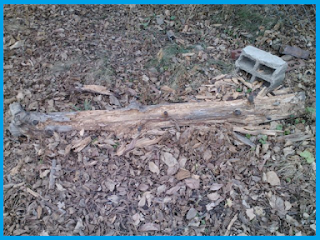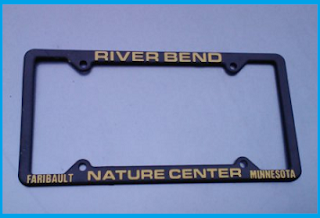So... it's not the Killer Rabbit of Caerbannog.
That's ok, though, because what's truly happening is pretty amazing in and of itself!
I went to River Bend Nature Center in order to find out exactly what creature had declared war on all of the logs in my yard.
As usually happens when you search for the answer to a question that requires more than a yes/no answer, The answers ended up producing more questions.
I love that!!!
Upon reaching River Bend, I didn't waste any time. I talked to the wonderful woman that was sitting just inside the entrance to the Visitors Center and told her my dilemma. She, in turn, immediately ran off to bring one of the naturalists out to speak with me. It was clear that they care a great deal about educating their visitors, rather than simply leaving them to fend for themselves and grab informational booklets.
I was grateful.
The naturalist and I pored over all of the photos on my phone. I made sure to tell her about the frantic scurrying I had heard one night, as well as the rabbit I had seen on another. She quite obviously agreed that a single rabbit couldn't have done so much damage.
No worries about Monty Python's killer rabbit, right?
It was most likely part of the reason for the wood damage, however.
See, there are quite a few small animals that need to chew (usually wood) at a pretty constant rate. They do this because their teeth never stop growing. Their teeth, after all, are essential to their survival. These are animals that need to use their teeth as tools, rather than just to eat.The chewing of materials like wood allows them to keep those teeth at a manageable size.
So what was the conclusion, you ask?
Well, it was probably a mixture of several animals. The rabbit I had seen was most likely one of them.
 |
| What caused this?! |
Squirrels, of course, were another. Most likely, they were the largest force behind the destructive chewing. They're everywhere in this neighborhood, after all! You cannot go outside the house without spotting a minimum of one. Normally, you see three or more.
But that's not all.
Woodpeckers are in abundance in my yard. There were plenty of pecking holes in evidence! While we all know that they peck holes into trees in order to grab unfortunate insect prey, their effect on the ecology of an area goes even further than that.
The new holes in the wood produce additional areas for bugs to seek cover within!
Once that happens, nuthatches come to the area, excited to fill themselves with the new wealth of food. They, in turn, widen the holes with their own beaks, making it easier for other animals to be able grab hold of the bark of a tree once a decent opening has been produced.
And then the circle repeats itself.
How awesome is that?! I have my own miniature eco-system in the yard!
Of course, there could also be some other animals making this happen. The resident shrew could be helping this along, as well, as could some other animal that I've yet to see. I have no real way of knowing at this moment. I'll just have to continue to watch and see what happens.
Who knew the backyard habitat I based off of the one in River Bend would be so successful?
I left River Bend after thanking the naturalist for taking the time to talk with me, as well as buying a much needed license plate frame for my car.
I'd say this trip to River Bend was very fruitful. Hooray!!!
Do you have a backyard habitat? A wild area really only needs to be as large as one square foot to produce some sort of result. Not to this level, of course, but in all honesty, I think most people are perfectly happy if they never have this much wildlife in their backyard!
It's definitely worth a try if you want to see new critters, or a larger amount of the critters that you normally see in your yard.





No comments:
Post a Comment